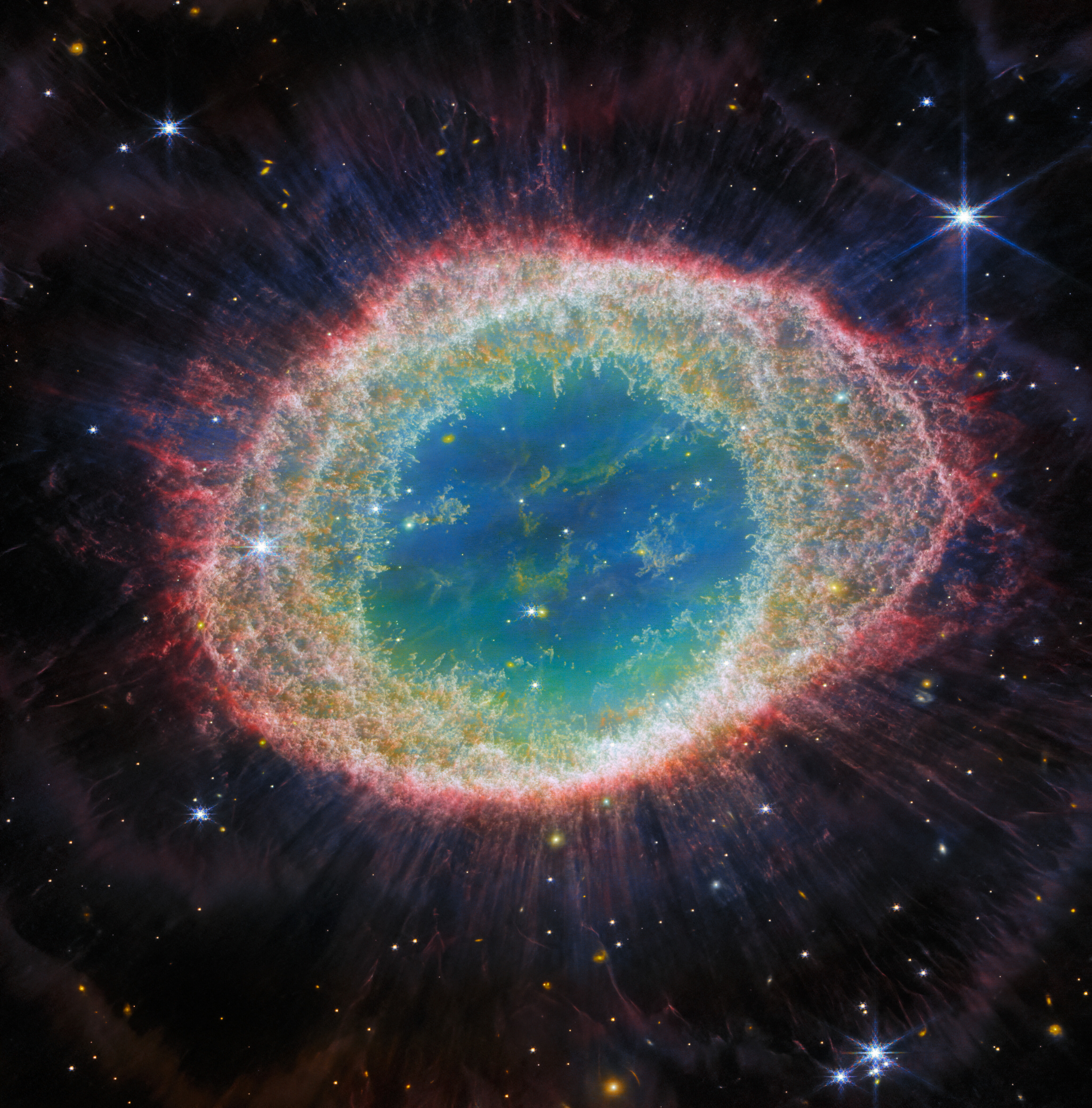Space photo of the week: Ring Nebula glistens like a jelly-filled doughnut in Webb telescope's latest images
The archetypal planetary nebula imaged by the James Webb Space Telescope now comes in two colorful versions, each showing spectacular features.

What is it? The Ring Nebula (also called M57 or NGC 6720)
Where is it? Around 2,000 light-years away, in the constellation Lyra
Why is it so special? Two stunning new images from the James Webb Space Telescope (JWST) show one of the closest and most famous planetary nebulas in exquisite detail. Although a preview was published a few weeks ago, these new versions — one taken using JWST's Mid-Infrared Instrument (MIRI), and the other snapped with the telescope's Near Infrared Camera (NIRCam) — reveal incredible detail in both the inner and outer regions of the nebulas's ring.
The Ring Nebula contains the cosmic leftovers of a star that reached the end of its life and began to shed its outer layers of gas. It appears as a squashed doughnut shape, but JWST's line of sight allows it to see directly down into a brightly colored barrel of material stretching into space. The main ring consists of gas expelled by the dying star at the nebula's center; just beyond it, as best seen in the MIRI image, are about 10 concentric arcs that are thought to be the result of the star's interaction with a much smaller companion star.
In the NIRCam image below, you can see intricate details of the inner ring's filament structure. Both images offer vastly more detail than a famous image of the Ring Nebula taken by the Hubble Space Telescope in 2013.
Related: 35 gorgeous nebula photos that capture the beauty of the cosmos
Can you see it in the night sky? Looking like a smoke ring in deep space, M57 is one of the most popular targets for amateur astronomers this time of year, though you will need a 4-inch (10 centimeters) or larger-aperture backyard telescope to spot the nebula. Very dark skies also help because, as with all planetary nebulas, their diffuse light is easily blocked by light pollution.
Get the world’s most fascinating discoveries delivered straight to your inbox.
The Ring Nebula is located in the Summer Triangle, one of the most famous asterisms, or star patterns, in the Northern Hemisphere summer (Southern Hemisphere winter) between June and September.
To find the Ring Nebula, first locate the brightest star in the Summer Triangle, Vega; then look below for a distinctive parallelogram of dimmer stars. You'll find the ring-shaped object between the stars Sulafat and Sheliak.

Jamie Carter is a freelance journalist and regular Live Science contributor based in Cardiff, U.K. He is the author of A Stargazing Program For Beginners and lectures on astronomy and the natural world. Jamie regularly writes for Space.com, TechRadar.com, Forbes Science, BBC Wildlife magazine and Scientific American, and many others. He edits WhenIsTheNextEclipse.com.
 Live Science Plus
Live Science Plus






